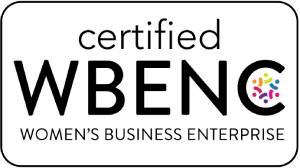 A company culture is a system of shared vision, purpose, values, assumptions, and beliefs. It’s also a set of unwritten rules that influence social norms. Newcomers are often expected to learn these unwritten rules. They often learn what is acceptable or not by observing the protocols or through others in the company.
A company culture is a system of shared vision, purpose, values, assumptions, and beliefs. It’s also a set of unwritten rules that influence social norms. Newcomers are often expected to learn these unwritten rules. They often learn what is acceptable or not by observing the protocols or through others in the company.
Company culture can be a defining factor in your company’s success or failure. If company culture is unclear to the leaders, existing employees and new hires will determine it. That’s quite a hit-or-miss tactic that can cause a rotating door of new hires eating into your profitability.
When I work with clients, we distinguish their culture not only by defining key cultural alignment factors but also by learning about the team’s natural wiring. For example, one of my client’s leadership team has two common human wiring elements in common. They all have a high sense of urgency (impatient) and have a high degree of autonomy. With this mix of wiring, they are inclined to push themselves and others for immediate results.
What do you think was this company’s concealed culture created from this leadership team’s human wiring mix of urgency and autonomy?
Since their leaders naturally pushed (high sense of urgency) for results (high autonomy), their staff found the greatest rewards came by delivering results quickly and in silos. Rather than departments collaborating, people made independent decisions to get results.
This autonomous, results-driven organization found itself operating in less-than-ideal productivity and profitability. There was often rework because decisions were made quickly without inter and intra-departmental collaboration.
My clients discovered the impact of their natural wiring in shaping the company culture. Once the influence of the wiring was distinguished, we were able to set up a powerful framework to align what they say their values were and demonstrate those values in action.
When you are clear on your team’s human wiring along with your key cultural alignment factors you get to the root of cultural alignment, team performance, and company profitability.
If you are inspired to learn about your (and your team’s) innate wiring, join us for the Wired to Win 101 Workshop 101 on Friday, December 13, 2019. Read More







 Whether you’re launching a new product line, service line or company procedures, keep in mind that the failure rate of change initiatives is estimated between 50-70%. One of the reasons for this high failure rate has to do with the way those changes are communicated.
Whether you’re launching a new product line, service line or company procedures, keep in mind that the failure rate of change initiatives is estimated between 50-70%. One of the reasons for this high failure rate has to do with the way those changes are communicated. A few months ago I shared an experience when a woman approached me after a speaking engagement and thanked me for saving her marriage. As a speaker, it might have been the first time I was a loss for words. She went on to explain that a simple tip that I shared on human wiring related to how Internal Thinkers and External Thinkers process thought made a significant difference in how she interacted with her husband.
A few months ago I shared an experience when a woman approached me after a speaking engagement and thanked me for saving her marriage. As a speaker, it might have been the first time I was a loss for words. She went on to explain that a simple tip that I shared on human wiring related to how Internal Thinkers and External Thinkers process thought made a significant difference in how she interacted with her husband.